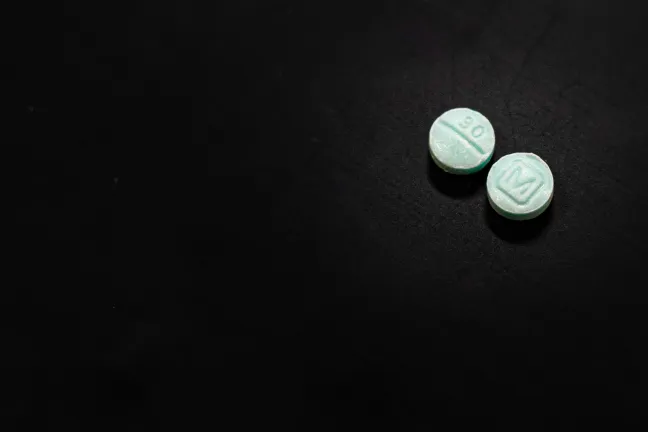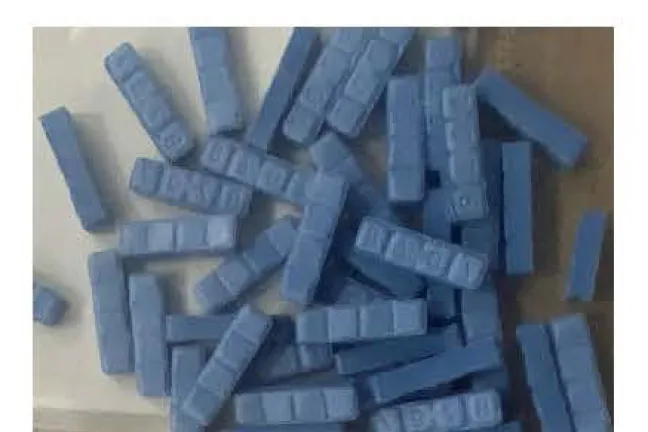Portland Police on Monday night announced the deaths of two teenagers from a suspected overdose of fentanyl.
On Sunday, officers responded to a suspected overdose death of a high-school-aged youth. In the teen’s possession were suspected fentanyl pills, commonly known as “M30s.”
The next day, Monday, officers responded to another suspected overdose death of a high-school-aged youth. Officers also found pills like the ones found Sunday.
While death investigations and toxicology reports can take months to finalize, investigators suspect both of the teens died from consuming counterfeit pain pills laced with fentanyl.
Cheap, counterfeit opioid pills containing fentanyl have fueled an overall increase in fatal drug overdoses across the Portland Metro region, and health officials last year raised particular concern about the risk to young people. Youth are more likely to swallow a drug than inject it, and youth who use pills are also less likely to have access to the life-saving, overdose-countering drug naloxone. Just two milligrams of fentanyl — about the weight of a mosquito — is a fatal dose.
In 2020, the most recent year for which data is complete, 73 people died from an overdose of fentanyl. Two of those people were younger than 18.
Data for all of 2021 is not yet complete, with many cases still pending toxicology reviews. But the number of fentanyl deaths confirmed through September 2021 — 139 deaths — is almost twice as high as the number reported in all of 2020. Four of those who died in 2021 were under age 18.
Teens might purchase what they think are Oxycodone, OxyContin, Percocet or Xanax pills through social media sites, Or they might get pills from friends, and that can give a false sense of security.
But these are almost always fake pills made with fentanyl, a cheaper, stronger and deadlier drug. Fentanyl is up to 50 times more potent than heroin and 100 times more potent than morphine. It is odorless, tasteless and colorless.
These pills are nicknamed “Blues,” for their common color, or “M30s,” for the stamp on the pills. Fentanyl is most commonly seen in blue, greenish, or pale-colored counterfeit pills. Stamps seen in other recent overdoses include “E7.” Imprint codes commonly seen on counterfeit Xanax containing fentanyl include “S 903,” “B707,” “R039” and “G3722.”
Schools and their students can report when they see drugs advertised on social media platforms through Safe Oregon.
Prevent an overdose
Two milligrams of fentanyl means certain death. Compare that to a dose provided during a multi-hour open heart surgery, where a patient wouldn't likely get more than a half of a milligram total — and under the constant monitoring of a medical team.
Signs of overdose include:
- Pale or clammy skin
- Bluish or pale lips and fingernails
- Limp body
- Slow or no breathing
- Vomiting or foaming at the mouth
- Difficult or not able to awaken
The amount of fentanyl in a counterfeit pill can vary so widely that consuming one can be a lethal gamble. It's a risk few parents think their kids would take.
“Every parent thinks their kid will never do this, but the numbers tell us a different story,” said Health Officer Dr. Jennifer Vines. “Of course, our number one message is to stay away from these completely. But some teens are going to try them. So adults need to know how to keep those kids alive.”
Adults who think a young person might be experimenting with pills or struggling with abuse or addiction, should learn about harm reduction measures that could prevent a fatal overdose. Then they should talk to their kids about how to reduce their risk of death if they decide to use pills.
Harm reduction measures include:
- Keeping the overdose reversal drug naloxone nearby
- Test drugs using a fentanyl test strip
- Do not use alone
- Start with a small dose of the drug
Naloxone, a medication that counteracts the effects of opioids, can reverse an overdose. Ask your healthcare provider or the provider for your loved one to also prescribe naloxone. Oregon Health Plan and most insurers provide coverage for this life-saving medication.
In Oregon anyone can obtain naloxone from a pharmacist without seeing a healthcare provider first. Check out this map of pharmacies that offer naloxone.
“Locally, we are ready to shift our thinking away from a punitive approach to drug use. Take away the shame and the guilt and the fear, and have an honest conversation,” Vines said. “This is what families and caring adults must talk about.”
Get Help
Probably the biggest barrier for kids talking to adults about drugs is the fear that they’ll get in trouble, said Stephen Dunlevy, supervisor for the Multnomah County School-Based Mental Health program.
“Teens might talk to their peers but they might fear the consequences of talking to their parents,” he said. “So as adults we need to think about how we make kids feel more comfortable confiding in us.”
Most adults don’t know the risks posed by counterfeit pills, so get educated and then talk to your kids regularly. Assure youth that they won’t get in trouble for talking, and keep the focus on support and safety.
For teens who might be struggling, Dunlevy recommended they sit down with their school counselor to talk about what support they might need. Some schools also have on-site mental health clinicians. And if you need to talk or are concerned about someone you know, there are teens and professions here to help at area organizations:
Multnomah County Crisis Services: 503-988-4888
Call in crisis or just to talk, for yourself or to support someone you know. 24 hours a day, 7 days a week
Oregon Youthline: 877-968-8491
Teen-to-teen crisis support and help line. Teens can also text “Teen2Teen” to 839863.
Safe Oregon: 844-472-3367
Kids, parents and school staff can report safety risks, like drugs advertised on social media platforms
This Beaverton School District campaign has a host of resources for schools and parents


